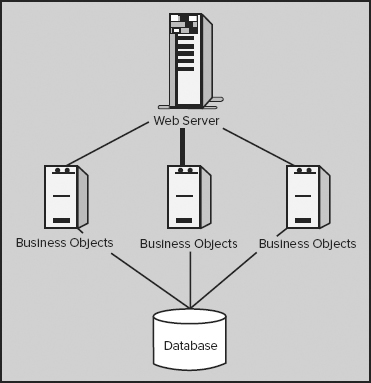Chapter 14
Web Services
WHAT YOU WILL LEARN IN THIS CHAPTER:
- What a Remote Procedure Call (RPC) is
- Which RPC protocols exist
- Why web services provides more flexibility than previous RPC Protocols
- How XML-RPC works
- Why most web services implementations should use HTTP as a transport protocol
- How HTTP works under the hood
- How the specifications that surround web services fit together
So far, you’ve learned what XML is, how to create well-formed and valid XML documents, and you’ve even seen ways of programatically interfacing with XML documents. You also learned that XML isn’t really a language on its own; it’s a meta language, to be used when creating other languages.
This chapter takes a slightly different turn. Rather than discuss XML itself, it covers an application of XML: web services, which enable objects on one computer to call and make use of objects on other computers. In other words, web services are a means of performing distributed computing.
WHAT IS AN RPC?
It is often necessary to design distributed systems, whereby the code to run an application is spread across multiple computers. For example, to create a large transaction processing system, you might have a separate server for business logic objects, one for presentation logic objects, a database server, and so on, all of which need to talk to each other (see Figure 14-1).
For a model like this to ...
Get Beginning XML, 5th Edition now with the O’Reilly learning platform.
O’Reilly members experience books, live events, courses curated by job role, and more from O’Reilly and nearly 200 top publishers.


